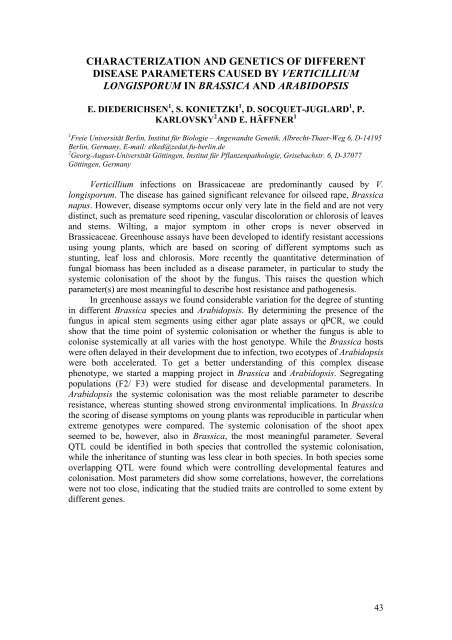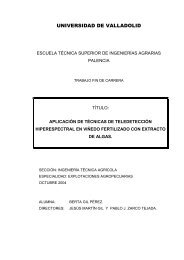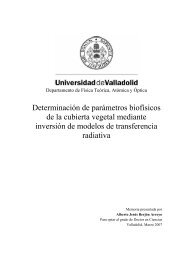10th INTERNATIONAL VERTICILLIUM SYMPOSIUM 16-20 ...
10th INTERNATIONAL VERTICILLIUM SYMPOSIUM 16-20 ...
10th INTERNATIONAL VERTICILLIUM SYMPOSIUM 16-20 ...
You also want an ePaper? Increase the reach of your titles
YUMPU automatically turns print PDFs into web optimized ePapers that Google loves.
CHARACTERIZATION AND GENETICS OF DIFFERENTDISEASE PARAMETERS CAUSED BY <strong>VERTICILLIUM</strong>LONGISPORUM IN BRASSICA AND ARABIDOPSISE. DIEDERICHSEN 1 , S. KONIETZKI 1 , D. SOCQUET-JUGLARD 1 , P.KARLOVSKY 2 AND E. HÄFFNER 11 Freie Universität Berlin, Institut für Biologie – Angewandte Genetik, Albrecht-Thaer-Weg 6, D-14195Berlin, Germany, E-mail: elked@zedat.fu-berlin.de2 Georg-August-Universität Göttingen, Institut für Pflanzenpathologie, Grisebachstr. 6, D-37077Göttingen, GermanyVerticillium infections on Brassicaceae are predominantly caused by V.longisporum. The disease has gained significant relevance for oilseed rape, Brassicanapus. However, disease symptoms occur only very late in the field and are not verydistinct, such as premature seed ripening, vascular discoloration or chlorosis of leavesand stems. Wilting, a major symptom in other crops is never observed inBrassicaceae. Greenhouse assays have been developed to identify resistant accessionsusing young plants, which are based on scoring of different symptoms such asstunting, leaf loss and chlorosis. More recently the quantitative determination offungal biomass has been included as a disease parameter, in particular to study thesystemic colonisation of the shoot by the fungus. This raises the question whichparameter(s) are most meaningful to describe host resistance and pathogenesis.In greenhouse assays we found considerable variation for the degree of stuntingin different Brassica species and Arabidopsis. By determining the presence of thefungus in apical stem segments using either agar plate assays or qPCR, we couldshow that the time point of systemic colonisation or whether the fungus is able tocolonise systemically at all varies with the host genotype. While the Brassica hostswere often delayed in their development due to infection, two ecotypes of Arabidopsiswere both accelerated. To get a better understanding of this complex diseasephenotype, we started a mapping project in Brassica and Arabidopsis. Segregatingpopulations (F2/ F3) were studied for disease and developmental parameters. InArabidopsis the systemic colonisation was the most reliable parameter to describeresistance, whereas stunting showed strong environmental implications. In Brassicathe scoring of disease symptoms on young plants was reproducible in particular whenextreme genotypes were compared. The systemic colonisation of the shoot apexseemed to be, however, also in Brassica, the most meaningful parameter. SeveralQTL could be identified in both species that controlled the systemic colonisation,while the inheritance of stunting was less clear in both species. In both species someoverlapping QTL were found which were controlling developmental features andcolonisation. Most parameters did show some correlations, however, the correlationswere not too close, indicating that the studied traits are controlled to some extent bydifferent genes.43




